FORMER AVOCA COURT HOUSE
85 HIGH STREET AVOCA, PYRENEES SHIRE
-
Add to tour
You must log in to do that.
-
Share
-
Shortlist place
You must log in to do that.
- Download report



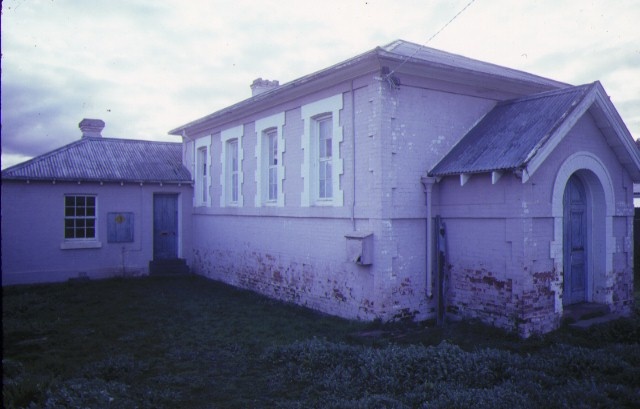
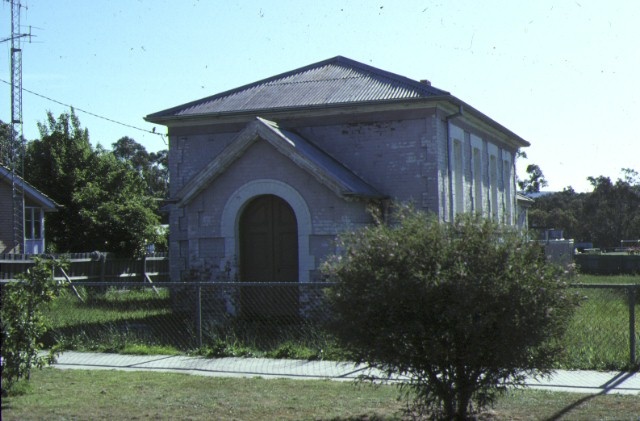
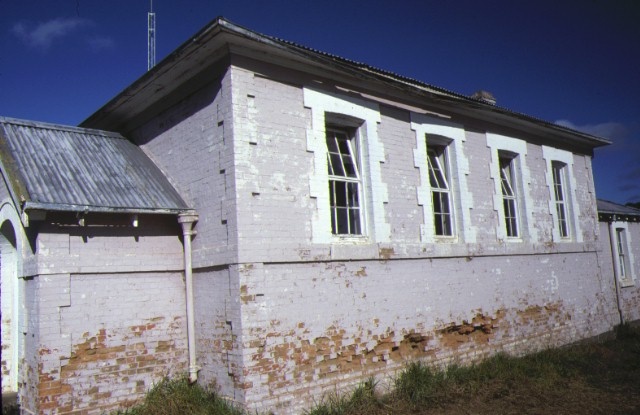
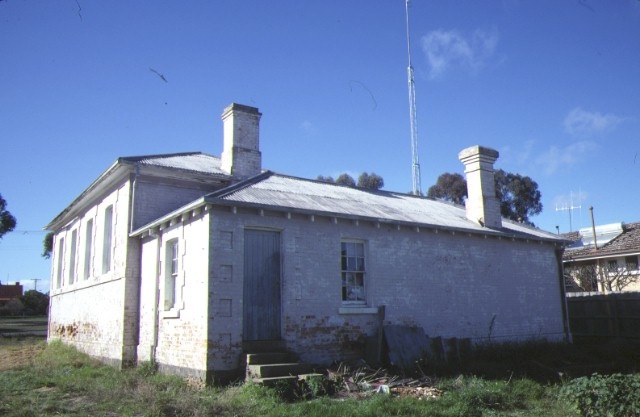
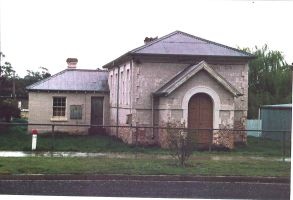
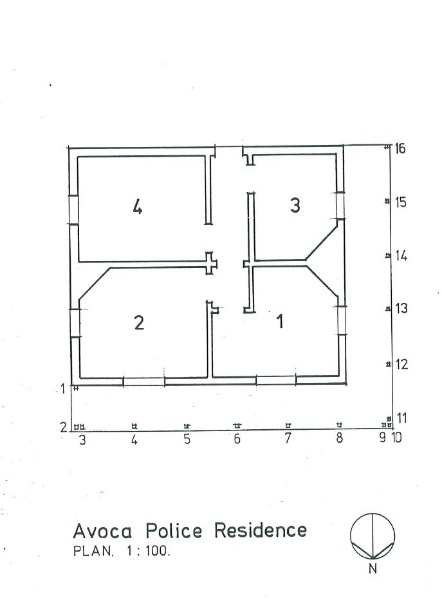
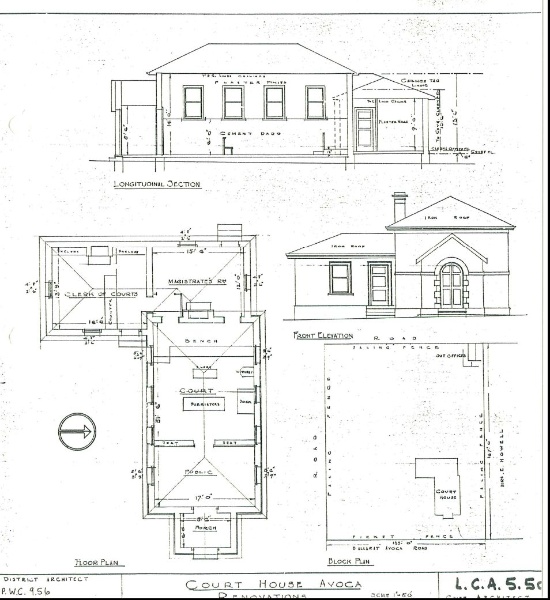
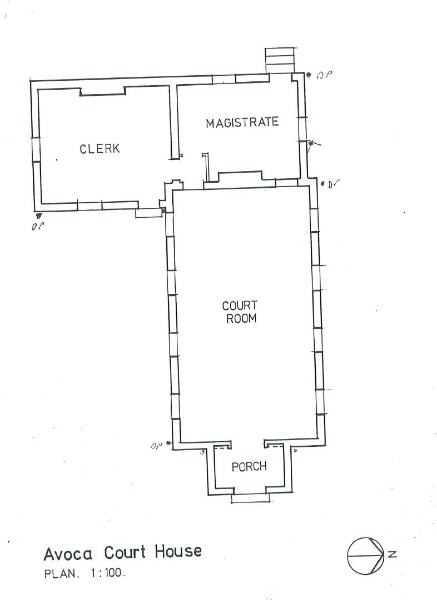
Statement of Significance
What is significant?
The Avoca Court House is a small, single-storey brick structure built in 1858-59 in response to rapid and substantial population growth generated by the rush for alluvial gold in Avoca in central Victoria in the 1850s. The building occupies a site reserved for public purposes, and forms part of a broader judicial and police complex that comprises a police magazine (1860) [H1548], police residence (c.1859-60) [H1661], and lock-up (1867) [H1660]. The court house was also formerly adjacent to the post-and-telegraph office, and the gold sub-treasury (now demolished). This cluster of public buildings was supported by the creation of the Shire of Avoca in 1864.
The Avoca Court House was built in a Renaissance Revival style to a design by the Public Works Department. Smith and Scott won the contract in September 1858. A further contract to extend the building was let a month later and the court opened in 1859.
The Avoca Court House is constructed of brick on stone footings. It has a shallow hipped roof clad in corrugated iron (originally slate). The building's simple form comprises a rectangular court room with an adjacent magistrate's room, a clerk of courts room, and a gable-roofed porch. Notable elements of the design include the window and door surrounds, quoins, string and eaves courses, and a round-headed entrance door.
The Avoca Court House was initially built to accommodate the local Court of Petty Sessions and the local Court of Mines (or gold warden's court). Courts of Mines were established in Victoria in 1857 to hear mining disputes; they replaced an earlier system of Local Courts or Local Boards that operated from 1855 in several of the larger gold-mining towns, including Avoca. In 1856, the number of mining cases heard at the Avoca Local Court was surpassed only by those at Ballarat and Bendigo. This level of activity presumably contributed to the need for a more substantial court house in Avoca. Its construction in 1858-59 came at a time when government revenue from gold-mining was used to fund extensive public building. Work on the building continued into the 1860s. It was upgraded to a Court of General Sessions in 1863.
How is it significant?
The Avoca Court House is of historical and architectural significance to the State of Victoria.
Why is it significant?
The Avoca Court House is of architectural significance as a rare surviving example of a small Victorian court house built in the late 1850s. It is one of the earliest surviving court houses in Victoria. It is also significant for its long period of operation spanning 120 years (1859-1979).
The Avoca Court House is of historical significance for representing demand for, and rapid growth in, the provision of public administration, particularly judicial services, on the goldfields, in the wake of dramatic population growth in the 1850s. It is part of an important and extensive network of court houses across the central Victorian goldfields area. The small scale of the building demonstrates the government?s willingness to establish an intensive network of judicial services across the mining towns of central Victoria.
The Avoca Court House is also historically significant as an element within a broader group of police buildings that includes a police magazine (1860), a police residence (c.1860), and a police lock-up (1867). The survival of such a comprehensive and intact group of small public buildings is rare in Victoria. The Court House also makes a vital contribution to the wider historic fabric of the important goldfields town of Avoca.
[Online Data Upgrade Project 2004]
-
-
FORMER AVOCA COURT HOUSE - History
The draft statement of significance and the above history were produced as part of an Online Date Upgrade Project 2004. Sources were as follows:
Court House data sheets – ‘Avoca’.
Jacobs, Twigg et al., ‘Avoca Shire Heritage Study, 1864-1994’ 1995.
Doyle, Helen, ‘Dispensing Justice: A historical report on the theme of justice in Victoria’, prepared for Historic Places Branch, DNRE, 2000.FORMER AVOCA COURT HOUSE - Permit Exemptions
General Exemptions:General exemptions apply to all places and objects included in the Victorian Heritage Register (VHR). General exemptions have been designed to allow everyday activities, maintenance and changes to your property, which don’t harm its cultural heritage significance, to proceed without the need to obtain approvals under the Heritage Act 2017.Places of worship: In some circumstances, you can alter a place of worship to accommodate religious practices without a permit, but you must notify the Executive Director of Heritage Victoria before you start the works or activities at least 20 business days before the works or activities are to commence.Subdivision/consolidation: Permit exemptions exist for some subdivisions and consolidations. If the subdivision or consolidation is in accordance with a planning permit granted under Part 4 of the Planning and Environment Act 1987 and the application for the planning permit was referred to the Executive Director of Heritage Victoria as a determining referral authority, a permit is not required.Specific exemptions may also apply to your registered place or object. If applicable, these are listed below. Specific exemptions are tailored to the conservation and management needs of an individual registered place or object and set out works and activities that are exempt from the requirements of a permit. Specific exemptions prevail if they conflict with general exemptions. Find out more about heritage permit exemptions here.Specific Exemptions:General Conditions: 1. All exempted alterations are to be planned and carried out in a manner which prevents damage to the fabric of the registered place or object. General Conditions: 2. Should it become apparent during further inspection or the carrying out of works that original or previously hidden or inaccessible details of the place or object are revealed which relate to the significance of the place or object, then the exemption covering such works shall cease and Heritage Victoria shall be notified as soon as possible. Note: All archaeological places have the potential to contain significant sub-surface artefacts and other remains. In most cases it will be necessary to obtain approval from the Executive Director, Heritage Victoria before the undertaking any works that have a significant sub-surface component.General Conditions: 3. If there is a conservation policy and planall works shall be in accordance with it. Note:A Conservation Management Plan or a Heritage Action Planprovides guidance for the management of the heritage values associated with the site. It may not be necessary to obtain a heritage permit for certain works specified in the management plan.
General Conditions: 4. Nothing in this determination prevents the Executive Director from amending or rescinding all or any of the permit exemptions. General Conditions: 5. Nothing in this determination exempts owners or their agents from the responsibility to seek relevant planning or building permits from the responsible authorities where applicable. Minor Works : Note: Any Minor Works that in the opinion of the Executive Director will not adversely affect the heritage significance of the place may be exempt from the permit requirements of the Heritage Act. A person proposing to undertake minor works must submit a proposal to the Executive Director. If the Executive Director is satisfied that the proposed works will not adversely affect the heritage values of the site, the applicant may be exempted from the requirement to obtain a heritage permit. If an applicant is uncertain whether a heritage permit is required, it is recommended that the permits co-ordinator be contacted.
-
-
-
-
-
AVOCA PRIMARY SCHOOL
 Victorian Heritage Register H1622
Victorian Heritage Register H1622 -
LOCK-UP
 Victorian Heritage Register H1660
Victorian Heritage Register H1660 -
FORMER POLICE RESIDENCE
 Victorian Heritage Register H1661
Victorian Heritage Register H1661
-
"1890"
 Yarra City
Yarra City -
"AMF Officers" Shed
 Moorabool Shire
Moorabool Shire -
"AQUA PROFONDA" SIGN, FITZROY POOL
 Victorian Heritage Register H1687
Victorian Heritage Register H1687
-
'Altona' Homestead (Formerly 'Laverton' Homestead) and Logan Reserve
 Hobsons Bay City
Hobsons Bay City
-
-















